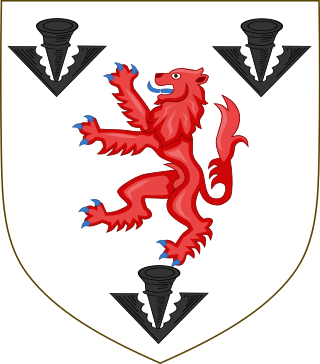Foundation and early history

The club was founded in 1762, pre-dating the Cheshire Hunt by a year. [3] [4] The nine founders included the Reverend Obadiah Lane of Longton, the first president; John Crewe, son of the Rector of Barthomley, and the Honourable Booth Grey, son of the fourth Earl of Stamford, the first secretaries; Robert Salusbury Cotton, son of Sir Lynch Salusbury Cotton, of Combermere Abbey; and George Wilbraham of Nantwich, later of Delamere Lodge. The first hunt was held on 14 November 1762. [3]
The club met twice annually at Tarporley, with each meeting lasting seven days, and the hunting in the early years largely taking place within Delamere Forest. [3] At first the club organised hare coursing, but its focus had already begun to switch to fox hunting within the first few years. [3] [5] Membership was limited to twenty in 1764, expanded to twenty-five in 1769 and later to forty. [3] The club's headquarters soon became the Swan Hotel, which dates from 1769. [6] [7] In the founding set of rules, members were required to drink "three collar bumpers" after both dinner and supper, and, in the event of marriage, to present each club member with a pair of buckskin breeches. [3]

The original hunting costume was specified as "a blue frock, with plain yellow metalled buttons, scarlet velvet cape, and double-breasted scarlet flannel waistcoat, the coat sleeve to be cut and turned up" and was strictly enforced with fines of a guinea per infraction. [3] This changed in 1770 to a red coat, green velvet cape and green waistcoat, and modern club members are distinguished by their green collars. [3] [6]
The club used the first pack of foxhounds in Cheshire, whose master was John Smith-Barry, son of the fourth Earl of Barrymore, of Marbury Hall. Among the hounds was the famed Blue Cap, which had beaten the hound owned by Hugo Meynell, founder of the Quorn Hunt, in a race held in 1762. [3] [6] The first known idiomatic use of the phrase "to send to Coventry" appears in the club book entry for 4 November 1765 relating to Barry: [8]
Mr. John Barry having sent the Fox Hounds to a different place to what was ordered, and not meeting them himself at that place, was sent to Coventry, but return'd upon giving six bottles of Claret to the Hunt. [3]

After Barry's death in 1784, the hunt used a pack kept by Sir Peter Warburton of Arley Hall, which later became known as the Cheshire Hounds. [3]
Members of the Egerton, Cholmondeley, Grosvenor and other prominent local families joined not long after the club's foundation. Among the many early members who were important in county or national affairs were Sir Philip Egerton of Oulton Park; Richard Grosvenor, first Earl Grosvenor, of Eaton Hall; Field Marshal Stapleton Cotton, first Viscount Combermere, of Combermere Abbey; Thomas Cholmondeley of Vale Royal; and his son, also Thomas Cholmondeley, first Baron Delamere. [3] [5] [9] Rowland Egerton-Warburton, president in 1838 and later one of the club's few honorary members, was known as the club's poet laureate. He immortalised some of its members' exploits in his Hunting Songs, and also wrote a history of the club to accompany an edition of the verses. [1] [3] [5]












